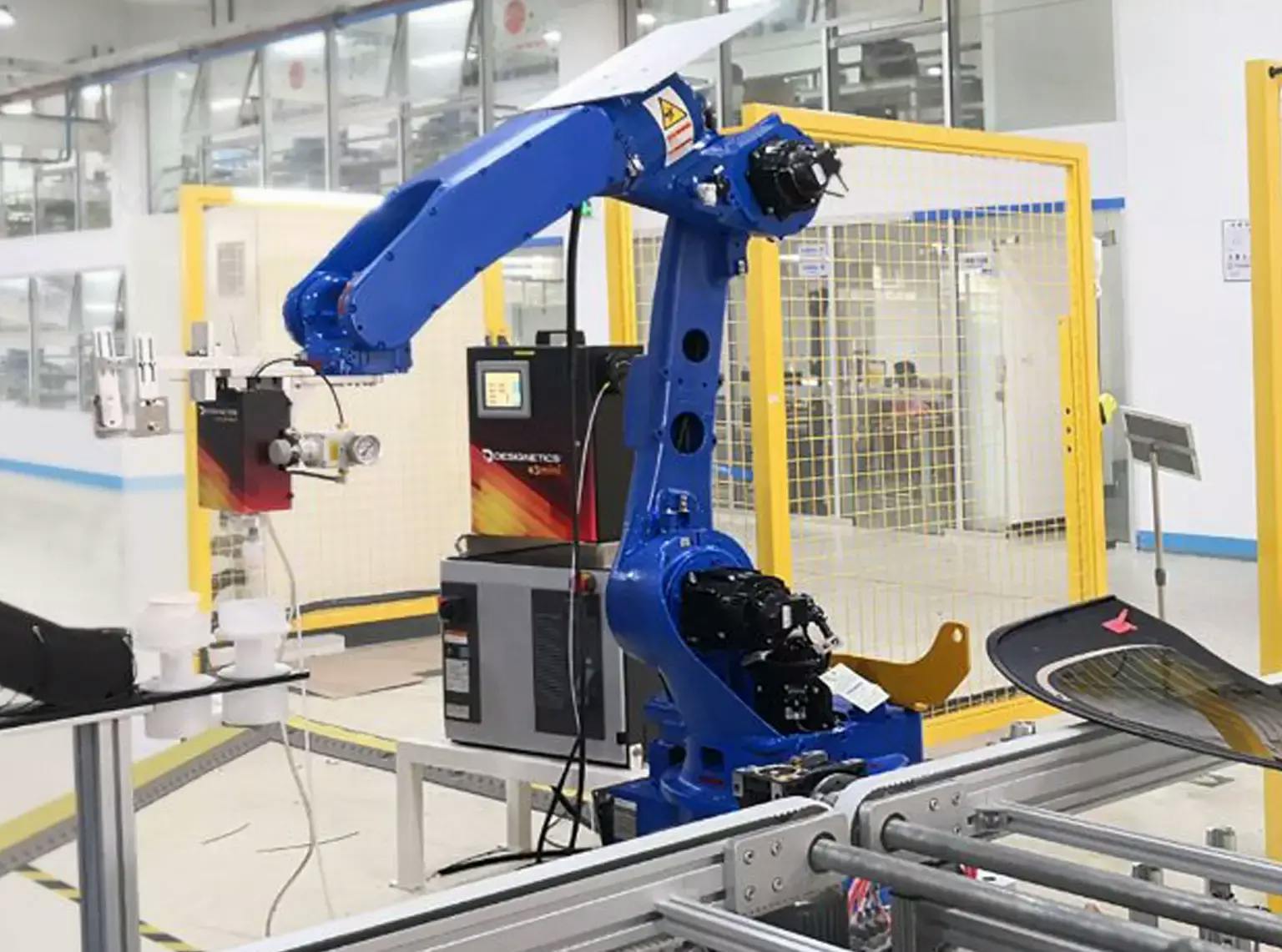The Benefits of Moving from Semi-Automated to Fully Automated Fluid Application
Implementing a semi-automated fluid application system allows smaller manufacturers, or those whose product mix changes frequently, to realize some of the benefits of automation – such as improved quality and higher throughput – without the time and monetary investment of a fully automated system. And when manufacturing or production requirements make the move to a fully automated system attractive, some of the investment in equipment, training, and implementation has already been made, making the transition smoother and the return on investment faster. For those looking to make the move from semi- to fully automated fluid application, here are some of the benefits you can expect.
Higher throughput, better productivity
The key component in a fully automated fluid application system is a precision pump panel, such as Designetics e3mini, e3multi, or e3minimax. These systems provide “hands-off” fluid application, enabling operators to focus on higher-level, value-added tasks such as quality control. With fast and easy setup via an HMI – or via the web-based interface on the e3minimax – the e3 series of fluid application systems can be operated in “auto” mode, making them compatible with any robot system or automated workflow.
To further enhance the productivity benefits of automated fluid application, Designetics has developed complimentary systems, such as the Applicator Track, to work alongside our e3 series. The Applicator Track supports these automated systems by supplying applicators to an exact, repeatable position – so a robot can locate and pick an applicator reliably and repeatably every time. And the Applicator Track has integrated monitoring, so if the track is running low on applicators, an operator is alerted to refill the track. If the track is empty, the system notifies the robot controller to prevent the robot from trying to pick a new applicator until the track is refilled.
Precise Fluid Application, Every Time
To provide the ultimate control and precision in fluid application, the e3minimax automated system from Designetics uses a servo-driven pump that can operate at a wide range of speeds. Communication between the e3minimax and the controller is via an Ethernet network, making the e3minimax ideal for integration with a robot or machine automation system.
But an automated fluid application system isn’t very useful if it doesn’t integrate seamlessly with the robot or automated workflow to deliver precise, error-free fluid application. For this, Designetics developed the Precision Air Compliance, an end-of-arm tool that’s used in conjunction with the robot to ensure there’s constant, consistent pressure between the applicator and the substrate, even if there are part deviations or changes in the applicator’s position. The Precision Air Compliance also features an anti-rotate, non-slip applicator adapter to ensure that the applicator always maintains its mounted orientation.
The Precision Air Compliance was also designed for seamless integration with the Applicator Track, with an “applicator strip” function that ejects the applicator from the adapter, so the changeover of applicators can take place with even better speed and efficiency.
Improved Quality, Less Waste
When it comes to delivering fluid without waste, it’s hard to beat a fully automated system. For example, our e3 series of automated systems offer a “line fill” function to fill the tubing line according to the user’s specifications. By priming the system and preparing the applicator, fluid dispensing can begin quickly and accurately, improving quality and reducing waste.
When there are idle periods in the dispense cycle – where the system remains active, but fluid isn’t being dispensed – an “applicator wet” function ensures the applicator is re-wet at specified intervals, to prevent the applicator from drying out and leading to unnecessary downtime and scrap. Similarly, at the end of an application cycle, the “snuff back” function on our automated systems runs the pump in reverse for a specified amount of time and at a specified rpm. This prevents drips that can cause quality issues and lead to scrap or rework.
Safety by Design
The peristaltic pumping technology behind our fully automated systems ensures the fluid dispensing system is air-tight, from the bottle to the pump, to the end-of-arm tooling, and down to the applicator. This means your fluids are protected from air exposure, and your employees and the environment are protected from detrimental effects due to chemical exposure – a significant benefit over semi-automated systems for fluids that can be hazardous to humans or the environment. And because the fluid never comes into contact with mechanical parts, there is no downtime for maintenance procedures such as cleaning tanks, propellers, gears, or diaphragms. This design also makes it easy to flush the tubing for product changeovers, or to switch out the tubing if needed.
The Right Fluid Application System for Your Process
Designetics has decades of experience developing fully automated fluid application systems that save manufacturers time and money through increased productivity, higher quality, reduced waste, and improved safety. Regardless of your fluid or substrate, Designetics can help you make the transition from semi-automated fluid application to a fully automated system. If you’d like to learn about the benefits that a fully automated fluid application system can bring to your process, reach out to us. Designetics’ engineers are here to help you make the best choice for your operation.
